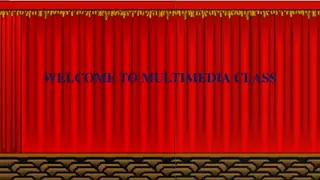
Evolution of Animation in Warner Bros. Studios during 1930s
Explore the fascinating history of Warner Bros. animation during the 1930s, from the creation of iconic characters like Bosko to the innovative work of animators like Tex Avery. Witness the transition from surrealism to slapstick comedy, and the birth of Looney Tunes and Merrie Melodies series which revolutionized the animation industry.
Download Presentation

Please find below an Image/Link to download the presentation.
The content on the website is provided AS IS for your information and personal use only. It may not be sold, licensed, or shared on other websites without obtaining consent from the author. If you encounter any issues during the download, it is possible that the publisher has removed the file from their server.
You are allowed to download the files provided on this website for personal or commercial use, subject to the condition that they are used lawfully. All files are the property of their respective owners.
The content on the website is provided AS IS for your information and personal use only. It may not be sold, licensed, or shared on other websites without obtaining consent from the author.
E N D
Presentation Transcript
History of Animation Second Cycle Degree in Theatre, Film, Television and Media Studies Academic Year 2019-2020 Lesson 11
Animation in the USA 5 Warner Bros. Around 1940, large Hollywood companies opened (or developed better) their own departments of animation, as Metro-Goldwin-Mayer did in 1937. As a result, animation tended to develop something close to a starsystem . The old surrealism was replaced by a kind of slapstick comedy, in the style of Charlie Chaplin or Buster Keaton. Acting becomes more important than simple action.
Animation in the USA 5 Warner Bros. Animators Hugh Harman and Rudolf Ising (previously working for Disney and for Mintz) created a character inspired by Mickey Mouse: Bosko, a black boy. Their first short, Bosko the Talk-Ink Kid (1929), caught the interest of producer Leon Schlesinger (1884-1949), chief of Pacific Art and Title. Schlesinger drew up a contract with Warner Brothers. In 1930, the LooneyTunes series began.
Animation in the USA 5 Warner Bros. Bosko the Talk-Ink Kid (Hugh Harman, Rudolf Ising, 1929)
Animation in the USA 5 Warner Bros. Congo Jazz (Hugh Harman, Rudolf Ising, 1930)
Animation in the USA 5 Warner Bros. Harman and Ising created also a sister series to the LooneyTunes : the MerrieMelodies (since 1931). They featured music that WB had already launched in its musicals. Because of a clash with Schlesinger, Harman and Ising left WB for MGM in 1933. They took Bosko with them; Schlesinger was left with just the two series titles. He needed new directors and artists, as well as new characters. He hired the newcomers Tex Avery and Frank Tashlin; he also promoted chief animator Friz Freleng to be director.
Animation in the USA 5 Warner Bros. Lady, Play Your Mandolin! (Hugh Harman, Rudolf Ising, 1931)
Animation in the USA 5 Warner Bros. 1936-1941: the Tex Avery years Frederick Bean Tex Avery, hired almost by chance, changed the face of WB s animation. Even if he would reach his creative peak later at MGM, he became a reference point for later WB directors, like Bob Clampett and Chuck Jones. Avery had a kind of subversive comic taste: he delved into absurdity, exaggerated speed, wordplays and breaking the fourthwall , always with a deep consciousness and knowledge of his expressive medium.
Animation in the USA 5 Warner Bros. Avery and Frank Tashlin worked with their team of animators (Chuck Jones, Bob Clampett and Robert Cannon) in a cottage detached from the main body of the studio, the so-called termiteterrace . The first relevant carachter he worked on was Porky Pig, co-protagonist of Golddiggers of 49 (1936). The stammering pig was a creation of Bob Clampett; however, as Bendazzi argues, it would be misleading to attempt to determine the individual creators or the precise dates of birth of these characters, since they developed over the course of years, undergoing many alterations in their physical aspects, manners and personalities .
Animation in the USA 5 Warner Bros. Golddiggers of 49 (Tex Avery, 1936)
Animation in the USA 5 Warner Bros. Little Red Walking Hood (Tex Avery, 1937)
Animation in the USA 5 Warner Bros. 1942-1947: The Bob Clampett years Avery left Warner s in 1942. Bob Clampett (1913-1984) took over the group s leadership. During Clampett s years, a lot of successful characters were perfectioned: Daffy Duck, Bugs Bunny, Elmer Fudd and more. Another important director contributed to this period: Friz Freleng (1906-1995). After Warner shut down the animation studio in 1963, he gained further success with his Pink Panther cartoons.
Animation in the USA 5 Warner Bros. Draftee Daffy (Bob Clampett, 1945)
Animation in the USA 5 Warner Bros. Ding Dong Daddy (Friz Freleng, 1942)
Animation in the USA 5 Warner Bros. 1948-1958: The Chuck Jones years Clampett left to work at Screen Gems in 1946 (Clampett s TV show Time for Beany began in 1949). Chuck Jones (1912- 2002) took over the main directorial responsibilities at WB. Helped by screenwriter Mike Maltese and layout artist Maurice Noble, he was to become the most intellectual of the WB animation directors. He redefined the characters by making them more complex from a psychological point of view; he preferred well-planned gags over screwball comedy; he sometimes played with high culture. His trademark series is the Wile E. Coyote one, started in 1948.
Animation in the USA 5 Warner Bros. What s Opera, Doc? (Chuck Jones, 1957)
Animation in the USA 5 Fred Quimby, a newcomer to animation, was appointed chief of the new animation department of MGM in 1937. After an interlocutory period, the studio reached its first big success with a 1940 short: Puss Gets the Boot. It was directed by William Hanna (1910-2001) and Joseph Barbera (1911-2006), and it featured two new characters: Tom, a cat, and Jerry, a mouse. During the next fifteen years, the series would win seven Academy Awards. Later, the Hanna-Barbera duo would found and direct one of the world s most gigantic companies of animated television series. Their first work in that field was The Ruff and Reddy Show (1957), shortly followed by HuckleberryHound (1958). Next came Yogi Bear (1958), TheFlintstones (1960), TheJetsons (1962), Scooby-Doo (1969), TheSmurfs (1970) and more.
Animation in the USA 5 The Cat Concerto (William Hanna, Joseph Barbera, 1947)
Animation in the USA 5 Tex Avery reached his best results at MGM (1942-1957). During the Second World War, he created the character of Droopy. However, Avery s approach to animation was not character-driven (even if his shorts featured some recurring stars other than Droopy, like the Wolf or Screwy Squirrel). Actions and acting were more important than characters. The extraordinary histrionic skills of his protagonists, mixed with a distraught, exaggerated setting and a tremendous comedic pace made each one of his films a tour de force of storytelling and timing. With Avery, the American style of comic animation reached its more extreme yet perfectly logical- development.
Animation in the USA 5 Red Hot Riding Hood (Tex Avery, 1943)
Animation in the USA 5 Northwest Hounded Police (Tex Avery, 1946)
Animation in the USA 5 King-Size Canary (Tex Avery, 1947)
Animation in the USA 5 From 1954 to 1955, Avery worked with Walter Lantz at Universal. He produced four short films: the most relevant one was Sh-h-h-h-h (1955). During the final part of his career, he directed several television commercials and wrote gags for Saturday morning cartoons at Hanna-Barbera Productions.
Animation in the USA 5 Sh-h-h-h-h (Tex Avery, 1955)
Animation in the USA 5 In 1944, Dave Hilberman, Zachary Zack Schwartz and Stephen Bosustow, three former-employees of Disney who had left the company during the 1941 strike, joined efforts to produce a short film for Franklin D. Roosevelt: Hell Bent for Election. They named their company United Productions of America: UPA. Thanks to a good team of scene designers, layout experts and directors (like John Hubley and Bob Cannon) they started developing a very personal approach to clever stylization. Hilberman and Schwartz left in 1946; Bosustow (1911-1981) remained the only leader of UPA.
Animation in the USA 5 The UPA approach preferred refined and cerebral humour over frantic and fast comedy. UPA declined during the 1960s; however, its style left a longstanding mark in international animation. Among the artists that contributed and who were later influenced by the UPA: Bill Melendez, George Dunning, Jimmy Teru Murakami. The most successful characters at UPA were Mister Magoo (since 1949) and Gerald McBoing Boing, who debuted in a 1951 short film by Bob Cannon, awarded with a Oscar.
Animation in the USA 5 Gerald McBoing Boing (Robert Cannon, 1951)
Suggested readings Giannalberto Bendazzi, Animation. A World History. 3 voll., Waltham, Massachusetts: Focal Press, 2015. Vol. I, pp. 118-126 (from and including- the section Warner Bros. up to and including- the section Carl W. Stalling, Musical Animator). Vol. II, pp. 12-19 (from and including- the section Warner Bros. Up to and including- the section ChuckJones ). Vol. II, p. 21 (only the section MGM s Cat and Mouse ); pp. 107- 109 (only the section On the small screen ). Vol. II, pp. 5-12 (from and including- the section Gerald McBoing Boing , up to and including- the section TheGalaxy ).






















